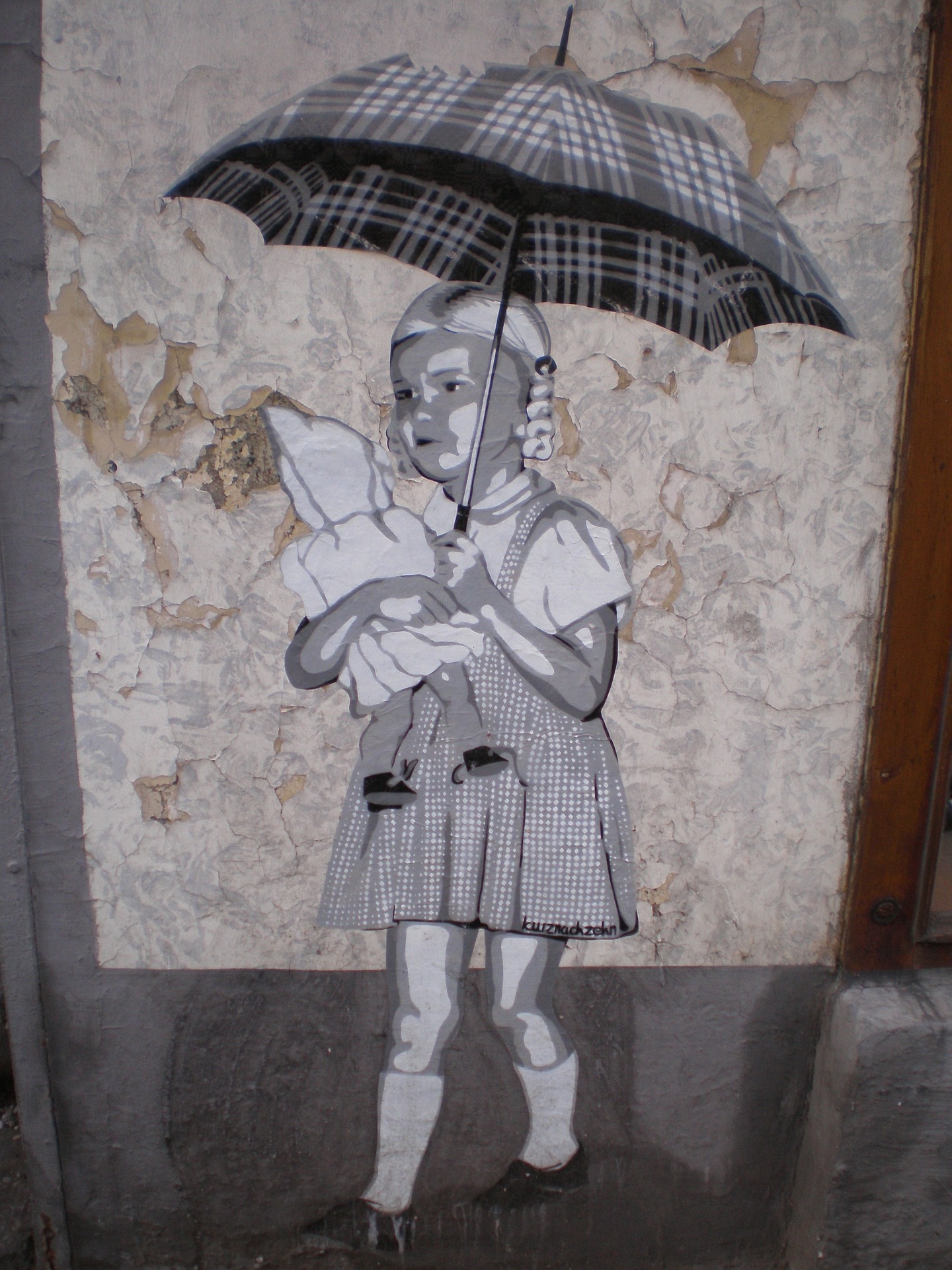“Oh, sweetheart,” we could hear our therapist saying.
Her voice always makes us feel loved, especially my younger selves.
Head down and feet twisted into a French braid, we listened to the calming melody of her voice.
“I don’t know what’s wrong with me,” I said in the voice of a little girl, sobbing.
Is this the eight-year-old?” she asked.
I nodded my head yes, crying and feeling frozen.
“Oh sweetheart,” she said again. “It’s okay.”
She asked my adult self if I would gently wipe away her tears, and so I did.
“You know, there are some fluffy clouds with propellers on them waiting for you and the other girls if you’d all like to hop on for a ride. Would you like to?”
I nodded my head yes, still looking down and feeling stuck.
“Okay, let’s get the baby too, and they can all ride on a cloud. They are just waiting to take you all to your new home.”
As I saw the fluffy clouds in my mind, I felt all the little girls jump on one at a time—the eight-year-old held the baby, and the two and four-year-olds rode together.
Mascara running down my face, my therapist then asked if we were ready to go.
Nodding my head yes, I imagined the motors turn on as we all flew in the sky toward our new home with a library of children’s books, soft yellow blankets, and a garden of sunflowers.
A little later, as our clouds with propellers landed, I felt scared but more at ease.
After we all got off our clouds, we walked up to an old brown door in New York City and were greeted by a woman with dark brown eyes and a gentle smile. She felt familiar to us, as if we had known her a long time.
She slowly walked over to the group of us and gently picked up the baby, swaddling her and humming.
She then led us into her home with yellow walls and ushered us into a toy room.
Inside, we saw more yellow blankets and what seemed to be thousands of books.
Though we were scared and some us were crying, we walked inside the room. As we did, the woman began to hum louder and then sing. As I listened, the intense grip I felt of the hand of my four-year-old loosened around my fingers and my tears began to dry.
While the four-year-old and I kept our distance from this woman, we looked at her curiously.
We wanted to move closer, but our feet twisted further and we couldn’t inch any nearer.
The woman didn’t push us and continued to sing while rocking the baby in a chair.
Though we couldn’t get closer, I sat down and put the four-year-old in my lap, listening to the woman sing while I stroked the little girl’s hair. We stayed this way for a long time until our therapist spoke again.
“As we come to an end today, where would you like to tuck these kids in, Rebecca?”
It was as if the hour went by in seconds.
I thought about it for a while and then responded, “My heart.”
My therapist then had me imagine building a secure grid around all these kids, beginning with my hands and tracing it up through my heart in blue. As we did this, all the kids seemed to drift off to sleep and my eyes dried. I became my adult self again.
“How are you feeling, Rebecca?” my therapist asked.
I smiled and told her much better.
As our session ended, my adult self wanted to cry.
I wasn’t upset, but feeling a mix of emotions—embarrassment, shame, and fear.
My therapist and I had spoken about dissociative identity disorder (DID) recently, but I’ve always tried to hide it.
While these little girls in me are beautiful, it’s not something most people understand.
I don’t just have parts within me that are different. I have distinct identities that I switch between during emotionally triggering or stressful experiences.
Sometimes I’m aware of it. Other times, I don’t think I am.
People have told me that when it happens my voice changes, I look down, and I have a different look to my face—like a scared small child.
While working with my DID has been challenging, the awareness of what has been going with me feels so much clearer that I have been able to hold more space for these little girls.
It’s taken a long time to find the right help, as it’s not something many understand.
While healing is a journey and we must do the work, understanding what we ourselves need is often not clear.
Unfortunately, sometimes it takes years, especially for those with dissociative identity disorder, to be understood and treated appropriately.
Luckily for me, I have finally found the trauma-informed therapy I need—one that does not shame or modify my emotions, but rather, holds a container with love and compassion for the hurt children inside me.
As we begin to understand the effects of trauma more in psychology, I hope we begin to do away with shaming attachment trauma, fear of abandonment, feeling suicidal, and so on.
Gentleness and a greater understanding that human beings are shaped by multiple interacting systems that often consist of traumatic experiences, oppression, inequities, etcetera is greatly needed in the field of mental health.
We don’t help survivors of trauma to heal by labeling and discarding them.
We help them by welcoming all of them—the messy, the highs and lows, the range of emotions and various parts of identities, into the room to explore and understand who they are and who they are on the road to becoming.
Healing is not something that occurs overnight. It takes a lifetime.
To all childhood trauma survivors, be gentle with yourself and walk away from anyone or anything who shames you.
Above all, take good care of yourselves.
It’s time to hold space for yourselves, warriors.
~







Read 4 comments and reply